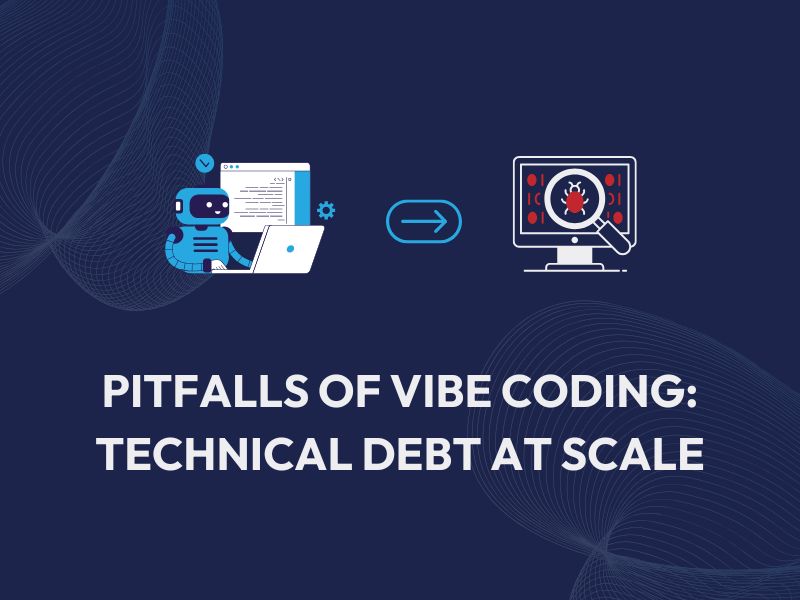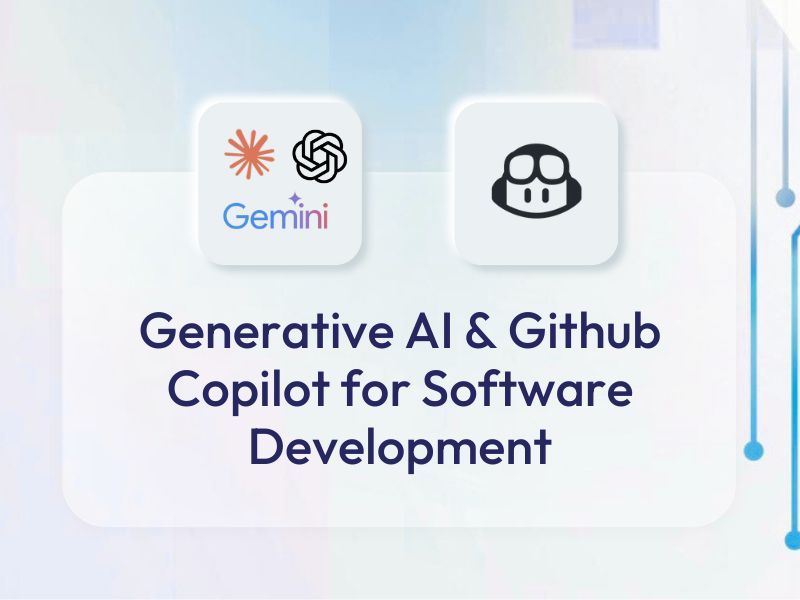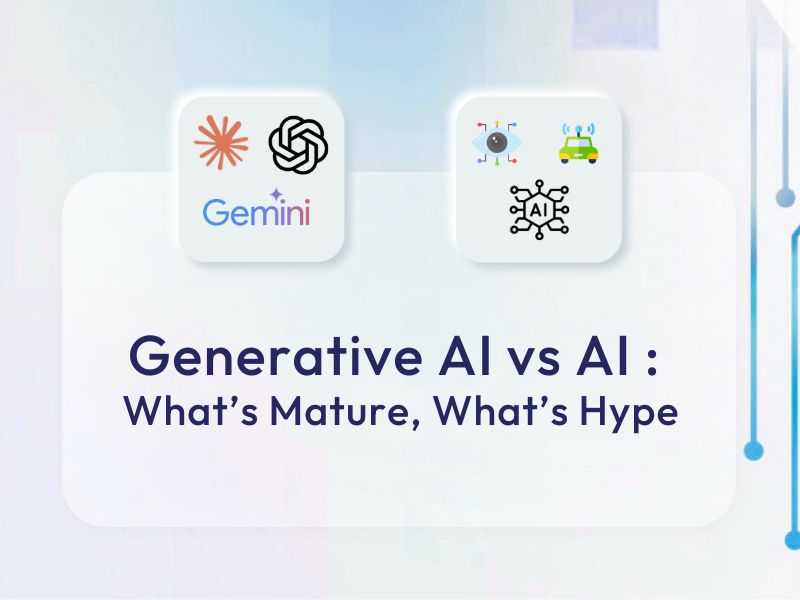MERN Stack 2025 Trends : Introduction
As we move through 2025, the main focus at Compileinfy is to build applications that can scale effectively and deliver value to users. Companies that fail to embrace technological advancement are at a risk of losing their competitive position in the market. Modern frameworks and methodologies built on top of the MERN stack with microservices, progressive web applications (PWAs), and serverless architecture have emerged as essential tools for meeting current market demands. In this article we will explore how businesses can leverage MERN Stack 2025 trends to build sustainable applications that support long-term growth.
The MERN Stack : Future of Web Applications
The MERN stack combines MongoDB, Express.js, React, and Node.js into an integrated development framework. This technology stack enables development teams to work seamlessly across both front-end and back-end components using JavaScript, which significantly reduces development complexity while improving team productivity.
Why Businesses Still Choose MERN Stack in 2025?
Organizations choose MERN stack for its capability to create applications that can grow with business needs. MongoDB’s document-based structure helps manage large volumes of data efficiently, supporting applications with evolving data requirements. React.js provides a component-based structure for creating responsive user interfaces, while Node.js handles server-side operations with speed. Express.js facilitates the development of robust APIs, making MERN stack a comprehensive solution for web applications.
Microservices: Enabling Growth and Flexibility
Microservices architecture divides applications into several independent components, where each component is responsible for a specific functionality. This approach allows development teams to build, deploy, and scale different parts of the application independently, providing organizations with the flexibility to adapt to changing requirements.
Results for Businesses
The implementation of microservices architecture enables organizations to scale individual components based on demand without affecting the entire system. For instance, a payment processing service can handle increased transaction volumes independently, optimizing resource utilization and controlling costs. Development teams can work concurrently on different services, accelerating the delivery of new features. The isolation of components ensures that issues in one service don’t cascade through the entire application, maintaining system reliability.
MERN Stack and Microservices
Node.js integrates effectively with microservices through its event-driven architecture. Technologies like Docker and Kubernetes enhance the deployment and management of MERN-based microservices, enabling organizations to maintain performance at scale. For example, e-commerce platforms can separate inventory management, payment processing, and user authentication into independent services, ensuring consistent operation during peak traffic periods.
Serverless Architecture: Optimizing Resources
Serverless architecture allows development teams to focus on writing high performant code without having to worry about managing server infrastructure. Cloud providers such as AWS, Azure, and Vercel handle infrastructure management tasks with ease, enabling organizations to deploy applications with increased efficiency.
Business Impact of Serverless Architecture
Serverless architecture provides significant cost benefits, as organizations pay only for actual compute time used rather than maintaining constant server capacity. The infrastructure automatically scales to handle varying levels of traffic without manual intervention. This capability proves particularly valuable for applications that experience unpredictable usage patterns, such as e-commerce platforms during sale events.
MERN Stack and Serverless
MERN applications integrate seamlessly with serverless platforms. APIs built using Express.js can operate as serverless functions, reducing latency and improving response times. The serverless approach complements microservices architecture, as each service can function independently, further enhancing application scalability.
Progressive Web Applications (PWAs): Improving User Experience
PWAs combine the capabilities of web and mobile applications, offering features such as offline functionality, fast loading times, and push notifications. The adoption of PWAs continues to grow as organizations recognize their potential to increase user engagement while reducing development costs significantly.
Benefits of PWAs for Businesses
PWAs have a measurable impact on business performance. Google reports that PWAs achieve 50% higher user engagement compared to traditional web applications. Organizations can eliminate the need for separate mobile and web application development, resulting in significant cost savings. The offline capabilities of PWAs ensure continuous user access to content and functionality, even in areas with limited network connectivity.
MERN and PWAs
React.js streamlines PWA development through its reusable component architecture and extensive ecosystem. Node.js supports server-side rendering capabilities, which optimize initial page load times and improve search engine visibility. The MERN stack enables organizations to create PWAs that deliver consistent performance and maintain user engagement.
Security: Strengthening the Application
With the advancement in technology, organizations must focus on strengthening their security measures to protect data and maintain user trust. Implementing comprehensive security frameworks becomes essential for building applications that can withstand potential threats.
MERN Stack Security Features
The MERN stack includes built-in security capabilities to protect applications. JSON Web Tokens (JWT) provide secure session management, while Express.js middleware prevents common vulnerabilities including SQL injection and cross-site scripting attacks. MongoDB’s encryption features protect data at rest, ensuring compliance with data protection regulations.
Implementation Practices
The combination of serverless architecture and microservices enhances security through function isolation. Organizations can contain sensitive data processing within specific serverless functions, minimizing exposure risks. Regular security assessments and adherence to established practices will further strengthen application protection.
MERN Stack 2025 Trends : Outlook
AI Integration in MERN Stack
Gartner predicts that 70% of organizations will implement AI to enhance customer interactions by 2025.
The MERN Stack ecosystem in 2025 emphasizes AI integration as a core component. Developers now integrate ChatGPT and LLMs directly within React components for real-time content generation and user assistance. MongoDB’s Vector Search capabilities power AI-driven search and recommendation systems, while Node.js runs machine learning models at the edge. Express.js incorporates middleware patterns for AI request handling, and TensorFlow.js enables real-time sentiment analysis and user behavior prediction. The stack supports AI-driven automated testing and natural language interfaces for database queries, making development more efficient and data access more intuitive.
Cloud-Native Solutions
Cloud-native technologies show projected growth at a compound annual rate of 23% from 2021 to 2028, according to Grand View Research.
Cloud technologies in 2025 have redefined MERN Stack deployment and architecture. Serverless MERN applications leverage edge computing by default, while MongoDB’s serverless instances operate on pay-per-operation pricing with automatic scaling. React Server Components optimize cloud deployment performance, and multi-region strategies ensure global consistency. Database mesh architecture enables efficient distributed data management, supported by automated infrastructure management through IaC. Zero-trust security models and enhanced monitoring tools provide better security and performance insights.
IoT and Real-Time Applications
Real-time processing and IoT integration mark significant advancement in 2025. Express.js can handle millions of concurrent WebSocket connections, while MongoDB’s time-series collections optimizes IoT data storage. Node.js workers can manage real-time analytics efficiently, and React components includes specialized IoT device management features. Enhanced edge computing support and WebAssembly integration enable complex calculations in the browser. The MERN stack can integrate with 5G networks for ultra-low latency applications and implement distributed caching for consistent real-time performance.
Conclusion
MERN stack with microservices, PWAs, and serverless architecture provides organizations with all the tools needed to build scalable, efficient, and user-focused solutions. The implementation of these technologies enables cost reduction, experience enhancement, and maintained agility in response to market changes. MERN Stack, with the power of AI, Cloud & IoT, has become a leading choice for building next-generation applications which require intelligence, scalability and real-time processing capabilities.
Ready to Build Future-Ready Applications?
Stay ahead of technology trends by leveraging MERN Stack’s evolving capabilities. Contact our MERN Stack experts to assess your application needs and explore modernization opportunities.





